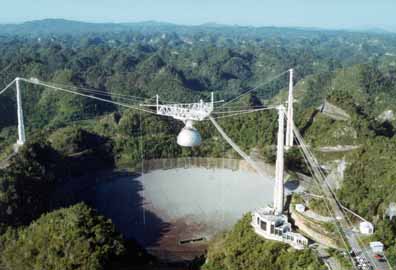|
|
| (未显示2个用户的7个中间版本) |
| 第1行: |
第1行: |
| − | <资料来源:[http://www.planetary.org/explore/topics/seti/seti_history_12.html The Planetary Society]> | + | <资料来源:[https://archive.md/2007.07.15-085842/http://www.planetary.org/explore/topics/seti/seti_history_12.html SETI Goes to Washington]> |
| | | | |
| | | | |
| 第5行: |
第5行: |
| | | | |
| | [[Image:Carl_Sagan.jpg|left|thumb|100px|'''Carl Sagan'''<br> | | [[Image:Carl_Sagan.jpg|left|thumb|100px|'''Carl Sagan'''<br> |
| − | Credit: The Planetary Society]]
| + | 图片提供:行星协会]] |
| | | | |
| − | From the begining, MOP faced a bumpy ride. As early as 1979 Senator William Proxmire awarded the program his infamous Golden Fleece Award," given to wasteful programs sponsored by the Federal government. In 1982 Proxmire actually managed to cut all federal funding for MOP through a legislative amendment, threatening to put an end to the entire effort. The threat was averted through the timely intervention of Carl Sagan, who met personally with the Senator and convinced him that SETI was a worthwhile pursuit. Sagan then introduced a petition in support of SETI signed by many of the world's leading scientists, including seven Nobel laureates. The publicity and prestige Sagan generated kept the NASA SETI program on track for another decade.
| + | MOP 的路途从一开始就不平坦,早在 1979 年参议员 William Proxmire 就把这个项目列入了他那臭名昭著的金羊毛奖,这个奖专门颁发给那些浪费联邦政府财政的研究项目。1982 年,Proxmire 实际上已经通过一项法案修正切断了 MOP 的所有联邦资金来源,并且威胁要终结整个项目。该威胁最终通过 Carl Sagan 及时的介入给逆转过来,他和这位参议员进行了私下的会面,并成功说服他 [[SETI]] 是物有所值的项目。Sagan 然后还拿出了由许多世界知名科学家为了支持 SETI 项目而写的请愿书,这其中包括了七位诺贝尔奖得主。Sagan 的努力使 NASA 的 SETI 项目得以走上轨道并一直持续运行了十年。 |
| | | | |
| | | | |
| − | On October 12, 1992, 500 years to the day after Columbus landed in the New World, the two NASA searches were finally launched. The Ames search began to scan its 800-1000 targeted stars from the 305-meter (1000-foot) radio telescope in Arecibo, Puerto Rico, the largest dish in the world. The JPL program began mapping the skies using the 34-meter dish at the Deep Space Communications Complex in Goldstone in the Mohave Desert. The searches were also given a new NASA designation - High Resolution Microwave Survey (HRMS).
| + | 1992 年 10 月 12 日,哥伦布在新世界登陆 500 周年之际,NASA 的两个搜索项目最终正式启动。Ames 的搜索通过一个 305 米直径的射电望远镜(世界上最大的碟状天线,位于波多黎各)来对 800 到 1000 颗恒星进行扫描。而 JPL 对整个天空进行搜索时使用的则是位于莫哈维沙漠里 Goldstone 的深空通讯设施(Deep Space Communication Complex)中的 34 米碟状天线。这些搜索也有了新的 NASA 称号 - 高分辨率微波调查(High Resolution Microwave Suvery,简称 HRMS)。 |
| | | | |
| | | | |
| − | [[Image:Arecibo_2.jpg|right|thumb|396px|'''A View of the Arecibo Radio Telescope'''<br> | + | [[Image:Arecibo_2.jpg|right|thumb|396px|'''阿雷西波射电望远镜的视图'''<br> |
| − | The 300 meter (1000 foot) Arecibo Radio Telescope in Puerto Rico, where SETI@home collects its data and the reobservations were conducted. Credit: Image courtesy of the NAIC - Arecibo Observatory, an NSF Facility]]
| + | 位于波多黎各的阿雷西波射电望远镜的 300 米(1000 英尺)碟状天线,SETI@home 的数据就是从那里获取的,之后的重新观测也是在那里进行。图片提供:NSF 资助的 NAIC - 阿雷西波观测站]] |
| | | | |
| − | Both searches utilized the most advanced technology available. The targeted search would analyze the spectrum between 1 and 3 GHz looking for narrow band signals. To accomplish this, its Multi Channel Spectrum Analyzer would analyze a 20 MHz wide band at any given moment, parse it into 20 million 1 Hz channels, and look for signals at bandwidths of between 1 and 28 Hz.
| + | 两个搜索项目都使用了当前最先进的技术。其中特定目标搜索所分析的是 1GHz 到 3GHz 之间的窄带信号。为了达到这个目标,它的多通道频谱分析器将分析每个时刻的一个 20 MHz 的带宽,并把它分解为两千万个 1Hz 的通道,然后在 1 到 28Hz 之间寻找信号。 |
| | | | |
| | | | |
| − | The JPL search was designed to map the entire sky at frequencies ranging from 1 GHz to 10 GHz. This enormous 9 GHz band would be analyzed by the Wide Band Spectrum Analyzer, designed to scan a bandwidth of 320 MHz simultaneously, and parse it out into sixteen million 20 Hz-wide channels. It would create a mosaic of 25,000 frames making up the entire night's sky. If we consider that 15 years earlier Big Ear was searching a mere 50 channels, we get a sense of the magnitude of the technological achievement involved.
| + | 而 JPL 的搜索是对整个天空从 1GHz 到 10 GHz 之间的频率进行扫描,这中间 9GHz 大的带宽是通过宽带频率分析器来分析的,该仪器可以同时对 320MHz 的带宽进行扫描,并把它分解为 1600 万个 20Hz 宽的通道。该搜索会对整个夜晚的天空分为 25000 个小块。如果我们还记得 15 年前大耳朵的搜索只能同时扫描 50 个通道,我们就会对这十来年相关的技术进步有更直观的感受。 |
| | | | |
| | | | |
| − | [[Image:Sen_Bryan.jpg|left|thumb|88px|'''Senator'''<br> | + | [[Image:Sen_Bryan.jpg|left|thumb|88px|'''参议员 Richard Bryan''']] |
| − | '''Richard Bryan''']]
| |
| | | | |
| − | But less than one year after their launch, both searches were suddenly and irrevocably terminated, victims of a new wave of Congressional budget cuts. This time it was Senator Richard Bryan of Nevada who led the charge against governmental expenditures on SETI. "The Great Martian Chase," he said, "may finally come to an end. As of today millions have been spent and we have yet to bag a single little green fellow. Not a single Martian has said take me to your leader, and not a single flying saucer has applied for FAA approval."
| |
| | | | |
| | + | 然后,仅仅在启动后一年之久,两个搜索项目就都突然地、不可逆转地中止了,直接原因是最近一波的议会预算缩减。这回针对联邦政府在 SETI 上的支出提出抗议是来自内华达州的参议员 Richard Bryan。他说:“这场寻找火星人的游戏该结束了,时至今日,几百万纳税人的钱已经花出去,而我们却连一个小绿人也没有见着。没有一个火星人对我说过要支持我的竞选,也没有一艘飞碟来申请美国联邦航空局(FAA)的飞行执照。” |
| | | | |
| − | After an investment of around $60 million over 23 years, and less than one year of operation, NASA's SETI project was unexpectedly dead. Nevertheless, despite the crushing disappointment to SETI enthusiasts caused by the cancellation of the most ambitious search ever attempted, it can now be said that HRMS did not die in vain. The enormous resources available to NASA supported remarkable technological advances, which would have been very difficult to achieve without such backing. Furthermore, the equipment used in the Ames targeted search did not go to waste, but was passed on to the privately funded SETI Institute. The Institute then used to launch its own targeted search, the ongoing and aptly named "Project Phoenix."
| |
| | | | |
| | + | 历经 23 年,花费了 6 千万美元,实际运行不到一年,NASA 的 SETI 项目还是出乎意料的结束了。不管怎样,虽然史上最有雄心的 SETI 搜索项目的最终结果让 SETI 爱好者们很失望,但现在可以说 HRMS 的努力并没有白费。NASA 所拥有的大量资源帮助项目在技术上取得了显著的进步,如果没有 NASA,要取得这些技术进步是相当困难的。另外,Ames 的特定目标搜索中所使用的设备并没有浪费,而是转交给了由私人提供资金的 [[SETI 研究所]]。研究所之后就启动了自己的特定目标搜索项目,也就是“Phoenix 项目”。 |
| | | | |
| − | Although the NASA searches were incomplete and short-lived, they completely transformed the face of SETI. Compared to the relatively amateurish efforts of previous searches, SETI became a professional enterprise conducted by experts using the most advanced technologies available. The scope and sophistication of the searches has also been increased by an order of magnitude through NASA's involvement. And though NASA is no longer an active participant in SETI, the existing SETI programs all took shape under the influence of its impressive effort.
| |
| | | | |
| | + | 虽然 NASA 的 SETI 项目没有完成,却完全改变了 SETI 的面貌。和之前一些搜索项目相对业余的努力相比,SETI 变成了一项由专家主导、使用现有的最先进的技术的事业。NASA 介入后,搜索的范围和复杂度都提高了一个数量级。虽然 NASA 不再是 SETI 的积极参与者,但所有现存的 SETI 项目在各个方面都深受其影响。 |
| | | | |
| − | [[SETI 的历史 - 11|'''第11章:NASA(美国航空航天局)的介入 ←''']] | [[SETI 的历史 - 13|'''→ 第13章:NASA 之后的SETI''']]
| |
| | | | |
| − | ==相关链接==
| + | [[SETI 的历史|'''返回 SETI 的历史 ←''']] | [[SETI 的历史 - 11|'''第11章:NASA(美国航空航天局)的介入 ←''']] | [[SETI 的历史 - 13|'''→ 第13章:NASA 之后的SETI''']] |
| − | *[[SETI]]
| |
| − | *[[SETI@home]]
| |
| − | | |
| − | [[Category:待翻译]] | |
<资料来源:SETI Goes to Washington>
第12章:SETI 到华盛顿
MOP 的路途从一开始就不平坦,早在 1979 年参议员 William Proxmire 就把这个项目列入了他那臭名昭著的金羊毛奖,这个奖专门颁发给那些浪费联邦政府财政的研究项目。1982 年,Proxmire 实际上已经通过一项法案修正切断了 MOP 的所有联邦资金来源,并且威胁要终结整个项目。该威胁最终通过 Carl Sagan 及时的介入给逆转过来,他和这位参议员进行了私下的会面,并成功说服他 SETI 是物有所值的项目。Sagan 然后还拿出了由许多世界知名科学家为了支持 SETI 项目而写的请愿书,这其中包括了七位诺贝尔奖得主。Sagan 的努力使 NASA 的 SETI 项目得以走上轨道并一直持续运行了十年。
1992 年 10 月 12 日,哥伦布在新世界登陆 500 周年之际,NASA 的两个搜索项目最终正式启动。Ames 的搜索通过一个 305 米直径的射电望远镜(世界上最大的碟状天线,位于波多黎各)来对 800 到 1000 颗恒星进行扫描。而 JPL 对整个天空进行搜索时使用的则是位于莫哈维沙漠里 Goldstone 的深空通讯设施(Deep Space Communication Complex)中的 34 米碟状天线。这些搜索也有了新的 NASA 称号 - 高分辨率微波调查(High Resolution Microwave Suvery,简称 HRMS)。

阿雷西波射电望远镜的视图 位于波多黎各的阿雷西波射电望远镜的 300 米(1000 英尺)碟状天线,SETI@home 的数据就是从那里获取的,之后的重新观测也是在那里进行。图片提供:NSF 资助的 NAIC - 阿雷西波观测站
两个搜索项目都使用了当前最先进的技术。其中特定目标搜索所分析的是 1GHz 到 3GHz 之间的窄带信号。为了达到这个目标,它的多通道频谱分析器将分析每个时刻的一个 20 MHz 的带宽,并把它分解为两千万个 1Hz 的通道,然后在 1 到 28Hz 之间寻找信号。
而 JPL 的搜索是对整个天空从 1GHz 到 10 GHz 之间的频率进行扫描,这中间 9GHz 大的带宽是通过宽带频率分析器来分析的,该仪器可以同时对 320MHz 的带宽进行扫描,并把它分解为 1600 万个 20Hz 宽的通道。该搜索会对整个夜晚的天空分为 25000 个小块。如果我们还记得 15 年前大耳朵的搜索只能同时扫描 50 个通道,我们就会对这十来年相关的技术进步有更直观的感受。
然后,仅仅在启动后一年之久,两个搜索项目就都突然地、不可逆转地中止了,直接原因是最近一波的议会预算缩减。这回针对联邦政府在 SETI 上的支出提出抗议是来自内华达州的参议员 Richard Bryan。他说:“这场寻找火星人的游戏该结束了,时至今日,几百万纳税人的钱已经花出去,而我们却连一个小绿人也没有见着。没有一个火星人对我说过要支持我的竞选,也没有一艘飞碟来申请美国联邦航空局(FAA)的飞行执照。”
历经 23 年,花费了 6 千万美元,实际运行不到一年,NASA 的 SETI 项目还是出乎意料的结束了。不管怎样,虽然史上最有雄心的 SETI 搜索项目的最终结果让 SETI 爱好者们很失望,但现在可以说 HRMS 的努力并没有白费。NASA 所拥有的大量资源帮助项目在技术上取得了显著的进步,如果没有 NASA,要取得这些技术进步是相当困难的。另外,Ames 的特定目标搜索中所使用的设备并没有浪费,而是转交给了由私人提供资金的 SETI 研究所。研究所之后就启动了自己的特定目标搜索项目,也就是“Phoenix 项目”。
虽然 NASA 的 SETI 项目没有完成,却完全改变了 SETI 的面貌。和之前一些搜索项目相对业余的努力相比,SETI 变成了一项由专家主导、使用现有的最先进的技术的事业。NASA 介入后,搜索的范围和复杂度都提高了一个数量级。虽然 NASA 不再是 SETI 的积极参与者,但所有现存的 SETI 项目在各个方面都深受其影响。
返回 SETI 的历史 ← | 第11章:NASA(美国航空航天局)的介入 ← | → 第13章:NASA 之后的SETI


